|
Denuded of their leaves, the verdant raiments of Spring and Summer rendered brilliantly hued in Autumn, trees in Winter allow us to hone in on the subtle and not so subtle differences of their outermost layer, overlaying the wood and vascular cambium -- their bark. As you make your way about in Winter, take note of tree bark - its color, texture, and form. What colors do you see? Greenish gray? Silver or brown? Red undertones? Is it smooth--as is typically the case with young trees, much like smooth skin of young people--or deeply grooved and weathered, showing its years? Do its grooves appear as elongated parallel ridges or striations? Diamonds? Braided twists? Is the bark rigid? Flaky? Layered? Deep or relatively flat? How does it feel to the touch? Hard or soft? Every species of trees has its signature bark, and people knowledgeable about trees can identify them by their bark alone. Take advantage of the starker Winter landscape to appreciate the varied beauty of tree bark. I prefer winter and fall, when you feel the bone structure of the landscape. Something waits beneath it; the whole story doesn't show. -- Andrew Wyeth
0 Comments
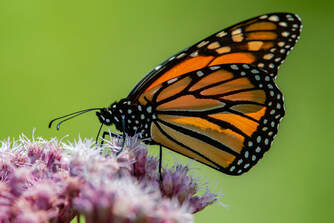 Photo by Richard Lee on Unsplash Photo by Richard Lee on Unsplash Running around the Central Park Reservoir in the warmer months, I often eye the milkweed plants along the north side of the path, wondering when the monarchs will arrive. These beautiful orange and black-patterned butterflies, seemingly delicate, make an epic annual migration over four generations in the course of a year. To my delight, this morning I noticed a number of monarchs, likely the year’s third generation. Averaging 50 miles a day for four to six weeks, monarch Generation 1 begins its migration in early September from as far north as Canada and travels as far as 2,100 miles to cool regions east of Mexico City. Arriving by the end of October, they hibernate until March, when they awaken, mate, and migrate to the Southern United States where they lay their eggs on milkweed and die. Generation 2 hatches, feeds, metamorphoses, and migrates north where it lays eggs, reaching the New York City area in late June. Generation 3 survives for 4-6 weeks, into late July/mid August, the monarchs we observe now around New York City. Their offspring, Generation 4, will arrive in Canada by August, where they will store energy to prepare for their September flight to Mexico. Milkweed offers monarchs important protection. Monarch larvae ingests the milkweed leaves and with them the plants toxins, which are poisonous to monarch predators, such as birds. On eating a monarch, birds learn of the toxin, vomiting up the butterfly and subsequently avoiding ingesting it. Other species of butterfly even mimic the monarch’s colors, nature’s way of helping them avoid predators who may confuse them with monarchs. Milkweed might look like an innocuous plant, standing without fanfare in a patch along the Central Park Reservoir. It takes on a different level of significance when one thinks about its role in the epic annual, multigenerational migration of monarch butterflies Botanists call flowers that have either male or female sex organs "imperfect", whereas flowers that contain both male and female sex organs are called "perfect". What a contrast to the negative views about human sexual diversity among all too many communities! June marks the arrival of "Pride Month", celebrating sexual diversity and gender variance. The month includes parades and other events to foster a positive, self-affirming stance against violence and discrimination toward LGBTQ people. June, 2019 promises to be the largest celebration of LGBTQ pride in history as it marks the 50th anniversary of the rebellion at NYC's Stonewall Inn in response to a police raid. Tolerance for human gender diversity may be an ongoing struggle, but gender variability is well recognized in the plant kingdom. Some trees, such as white ash and willow, have male and female flowers on different trees (that is, individual trees bear either male or female flowers). Others, such as beech and oak, have separate male and female flowers on the same tree. And others, such as magnolias, serviceberries, and elms, produce flowers with both male and female parts. That gender isn't binary is apparent in the plant kingdom. And, as the courageous people standing up for LGBTQ rights have shown us, gender isn't binary among humans either. Rather, among many natural creatures, ourselves included, there are variations of gender expression, with gender manifesting along a spectrum rather than black or white. There is much that plants can teach us, including that sexuality manifests in diverse ways.  Invasive Kudzu Invasive Kudzu Invasive species upset the delicate balance of natural ecosystems. They disrupt food chains, destroy nutrient-providing resources, and overwhelm native species. Though invasive creatures can be introduced by storms and climate shifts, more frequently they are introduced by humans. As our world becomes increasingly globalized, it can seem close to impossible and perhaps futile to attempt to eradicate invasive species. Yet, responding to them is necessary. New York City is particularly vulnerable to invasive species as an international city. Visitors arriving from around the world sometimes accidentally carry seeds lodged in the soles of their shoes. Cargo ships inadvertently carry other stowaways. A number of invasives can be found in our parks. Tea Crabapples, a native of China is found in woodlands such as Central Park's North Woods and has been described as "the little apple that ate the Big Apple without careful management". Japanese Knotweed, grows so rampantly that it can crowd out other, more desirable plants. English Ivy wraps around tree branches, making it more difficult for native trees to receive the sunlight they need to grow. As with natural ecosystems, the delicate balance of a nation can be upended by hostile intrusions. Such attacks can require aggressive responses, at great sacrifice. On Memorial Day we honor those who gave their lives protecting and defending our country and its allies from militaristic threats and intrusions. We pay tribute to their courage and sacrifice and the unfathomable loss felt by their loved ones. 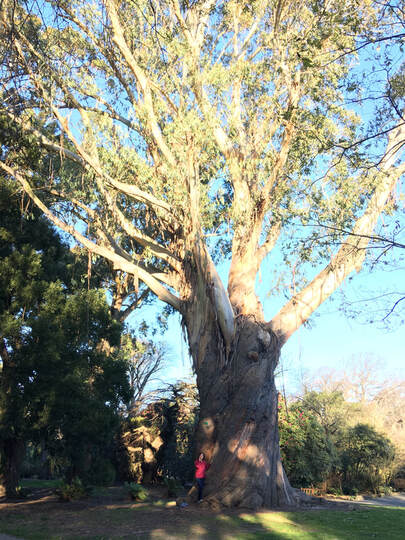 I am a restless person. Left to my own when confronted with free time I like to go elsewhere, to get away and explore places near and far, other countries, other landscapes, other neighborhoods, and I am fortunate that circumstances allow me to do so. Restlessness has had its rewards. It has introduced me to different people and cultures, to new perspectives and has broadened my sense of natural and human history and activity. At the same time, it can take a lot of resources to be on the go, including time, money, and pollution-emitting carbon. Through hiking, exploring and guiding forest therapy walks, I spend much time in the presence of trees, pausing to take in their presence, to notice their form, and to contemplate their lives. Unlike animals, trees can't run away from their predators. They live their entire existence, sometimes hundreds of years, in one place (200 years in the life of a tree is the equivalent of 40 human years). Not able to run away or fight with tooth and claw, they carry their own medicine and systems to ward off danger. There's a reason so much of our medicine derives from plants: Imagine what trees have witnessed over the years as their trunks grow tall and thick and their branches reach skyward! Of course, trees are hardly still. From large vascular systems transmitting xylem and phloem to micro-activity on a cellular level, there is much movement, even if it isn't always visible to us. Yet, other than through the disbursal of seeds, trees are not mobile, whereas we are. As a human, I am animal, with muscles and limbs that enable me to ambulate and senses that enable me to to be drawn to what I need or to turn away from what is unpleasant or dangerous. This way of being is as central to me as it is to any other creature in the animal kingdom. Yet there is much that trees can teach us. Lately I've been thinking a lot about tuning in from time to time to a tree's perspective and the lessons to be learned. Without the impossible task of abandoning my animal self, maybe there is something to be said for staying more local, for standing tall while the activity of the world happens around me. What lessons would I absorb? What powerful medicine might I generate from such a stance? I recall the snarky word play, "Make like a tree and leave!" Cute, maybe, but what a brusque and inapt dismissal of our botanical, oxygen-providing neighbors on which we depend. Maybe it's time we "Make like a tree... and stay." 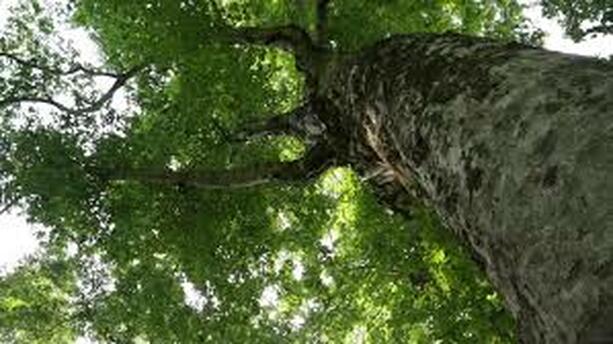 They stand tall, nurturing their offspring to enhance their chances of growing steadily and sturdily. They support their neighbors, transmitting messages across vast and intricate networks to ensure the community’s safety and well-being. They have withstood the cycles of many years, including challenging conditions, yet persist with grace and beauty. They are mothers – mother trees. Much attention has focused lately on the networked nature of forests. Trees exist not simply as individuals but within a highly collaborative, interconnected system, communicating through elaborate circuitry of fungi and root tips. "Forests", notes forester Peter Wohlleben in The Hidden Life of Trees, are superorganisms with interconnections much like ant colonies" Key to this interconnectedness are "Mother Trees", a notion pioneered by Scientist Suzanne Simardin (who appears as a fictionalized character in Richard Powers' The Overstory, the subject of the prior blog). The dominant trees in forests, Mother Trees function as central nodes for extensive underground networks of roots and mycorrhizal fungi. They nurture young trees by spreading fungi to them and conveying needed nutrients. Mother Trees also restrain the unfettered growth of young trees so that they can grow in ways that make them sturdier and more resilient.Writes Wohlleben: " Young trees are so keen on growing quickly that it would be no problem a all for them to grow about 18 inches taller per season. Unfortunately for them, their own mothers do not approve of rapid growth. They shade their offspring with their enormous crowns, and the crowns of all the mature trees close up to form a thick canopy over the forest floor. This canopy lets only 3 percent of available sunlight reach the ground and, therefore, their children's leaves. Three percent--that's practically nothing. With that amount of sunlight, a tree can photosynthesize just enough to keep its own body from dying. There's nothing left to fuel a decent drive upward or even a thicker trunk .... [S]low growth when the tree is young is a prerequisite if a tree is to live to a ripe old age. ... Thanks to slow growth, their inner woody cells are tiny and contain almost no air. That makes the tree flexible and resistant to breaking in storms." Slow growth also makes trees resistant to disease-bearing fungi,, which has difficulty penetrated the their tougher trunks. In the meanwhile, over a period that could last 200 years (the equivalent of 40 human years), the Mother Tree passes along sugar and other nutrients to the offspring. "You might even say they are nursing their babies," notes Wohlleben. Thanks to the attentiveness of Mother Trees, young trees can grow up strong and resilient, and forests can thrive. The same can be said for the roles of mothers (and fathers) within human families and communities. On this Mother’s Day, consider the Mother Trees around you.  New York is the epicenter of the book publishing industry. So, in exploring NYC nature connections it is apt to note the 2019 Pulitzer Prize for fiction awarded to Richard Powers' The Overstory, a novel in which trees shape the lives of nine characters and are so vividly evoked as to be characters too. In addition, Victoria Johnson's American Eden was a finalist for the Pulitzer for history. American Eden is a riveting biography of David Hosack, visionary physician and botanist during the early Republic who created the New York's first botanical garden (more about this terrific book in a later blog). Nature certainly received much attention from this year's Pulitzer Prize Board. The Pulitzer Prize Board describes The Overstory as "An ingeniously structured narrative that branches and canopies like the trees at the core of the story whose wonder and connectivity echo those of the humans living amongst them."....a sweeping, impassioned work of activism and resistance that is also a stunning evocation of—and paean to—the natural world. From the roots to the crown and back to the seeds, The Overstory unfolds in concentric rings of interlocking fables that range from antebellum New York to the late twentieth-century Timber Wars of the Pacific Northwest and beyond. There is a world alongside ours—vast, slow, interconnected, resourceful, magnificently inventive, and almost invisible to us. This is the story of a handful of people who learn how to see that world and who are drawn up into its unfolding catastrophe." With stirring, incisive descriptions, Powers awakens deep, limbic understanding of humans' biological and emotional connection to the natural world and the primacy of trees. “This is not our world with trees in it" he writes. "It's a world of trees, where humans have just arrived.” And what lessons there are to be learned from trees. Here's a passage I particularly like, one that portrays survival of the fittest not as fierce drama played out through competition among individuals but rather as a result of successfully networked, interrelated, and cooperative communities: "The things she catches Doug-firs doing, over the course of these years, fill her with joy. When the lateral roots of two Douglas-firs run into each other underground, they fuse. Through those self-grafted knots, the two trees join their vascular systems together and become one. Networked together underground by countless thousands of mile of living fungal threads, her trees feed and heal each other, keep their young and sick alive, pool their resources and metabolites into community chests.... Her trees are far more social than [she] suspected. There are no individuals. There aren't even separate species. Everything in the forest is the forest. Competition is not separable from endless flavors of cooperation. Trees fight no more than do the leaves on a single tree. It seems most of nature isn't red in tooth and claw, after all." There is much to learn from trees. 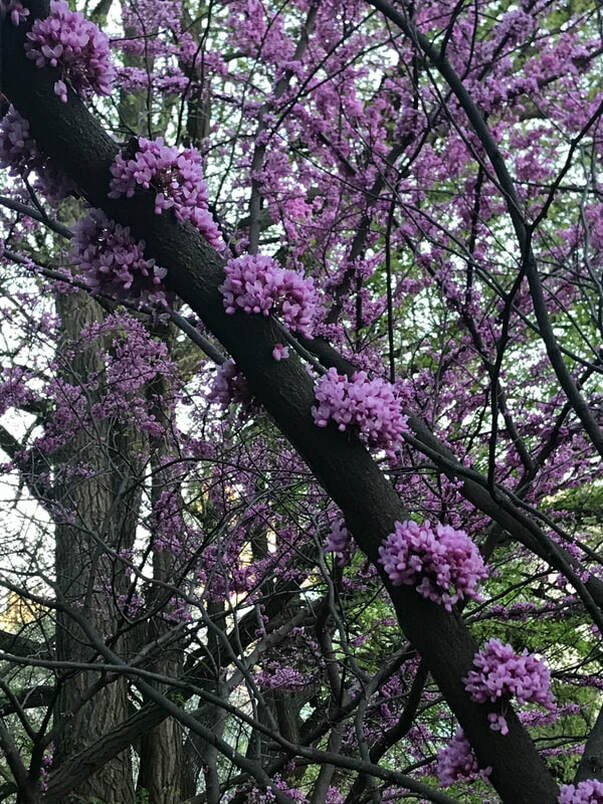 Eastern Redbud in bloom in Central Park Eastern Redbud in bloom in Central Park Trees are bursting forth in flower in our parks, offering heady, sensory ecstasy of color, shape, and smell. Yet missing from the vibrant whites, pinks, yellows, and purples on some trees is a touch of green. On these trees, flowers are blooming but leaves have yet to appear. Why is it that some trees -- Eastern Redbuds, Cornelian Cherry Dogwoods, Magnolias, and Crabapples to name a few -- flower before their leaves unfurl? With most plants, leaves begin to unfold and then flowers bloom, but for some the sequence is reversed. An insightful friend with a sense of humor likened this behavior human adolescence, with often distracting reproductive hormones triggering well ahead of long-term sustaining activities, like education and career advancement. Flowers, as you know, are plants' reproductive structures. Once pollinated, they form fruit that bear seeds that enable new life. Leaves, on the other hand, are plants' source of sustenance, enabling the production of food through photosynthesis. Through chlorophyll and tiny stomata found primarily on the leaf's lower surface (a square centimeter of a leaf contains anywhere from a few thousand to hundreds of thousands) leaves breathe in carbon dioxide and breathe out blessed oxygen on which we depend, while producing sugar for plant nourishment. And through transpiration, water absorbed through root hairs evaporates through stomatal openings from the leaf surface, enabling water and minerals to be absorbed from the soil and conducted to the top of the plat. Without leaves, trees die once stored sugar is depleted. Why would a tree flower before leafing out? Hysteranthous -- the behavior of leaves expanding after flowers have opened -- occurs for a variety of reasons, which give these trees an edge in reproduction. These trees often pollinate through wind (19% of all pollination), which drifts more freely through a tree canopy in the absence of leafy vegetation, making it easier for these trees' inconspicuous flowers (catkins and cones) to be pollinated. And for the 80% of trees that pollinate by vertebrate or insects, early flowering offers the advantage of fewer other blossoms to distract pollinators. For understory trees and plants, like Redbuds, Forsythia, and Witch Hazel, that blossom solely from stored nutrients, flowering early avoids competition with vegetative growth for limited resources. Early flowering also allows for greater time for fruit growth and seed maturation as well as dispersal. Fruits and seed dispersed by birds need to mature to coincide with bird migration. The sequencing of trees' and plants' flowering and leafing is diverse and driven by physical, biotic, and environmental conditions. One wonders how the same impact human reproduction. 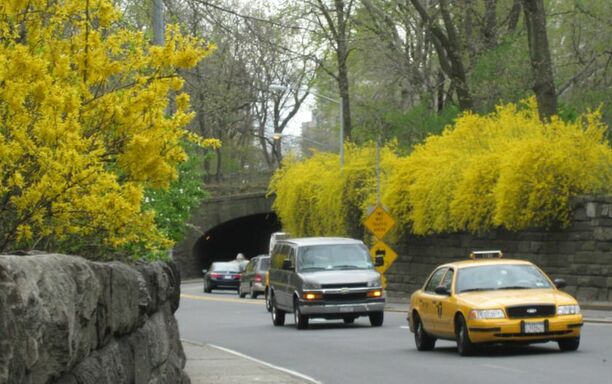 It is happening: bursts of colors emerging in planted areas of our city as the daylight hours lengthen and temperatures warm. First came a hint of yellow, barely visible within tightly packed buds. And then one day, just a few days ago, they appeared: the saturated, taxi-cab yellow of forsythia flower, 4-lobed wonders appearing before the shrub’s leaves unfurl. And now a broader palette of wisps of color bloom: the deep red hue of maple flowers, rust-colored elm blossoms, yellow-gold cornelian cherry dogwood flowers, and reddish-pink of crabapple blossoms, daffodils, sky-blue of bluebells, and the yellow and lilac of crocus flowers encircled by blade-like leaves. Vibrant and expressive, wonders of form and color, these early spring flowers will soon be followed by lilacs and viburnum, wisteria, trillium and magnolia, azalea, cherry and redbud, tulip and tulip tree, and dogwoods – flowers that bloom locally in April, sequencing into blooms of late spring and summer. Over the past few weeks, much of my attention has turned to the needs of work and family, obligations for which I am grateful as they tether me to relationships and projects I care deeply about. But noticing spring’s first flowers awakens me to what is bigger than my immediate world. I am jolted into awareness of nature and its cycles, of which we--even in the course of day-to-day obligations--are a part. "My goodness," I am reminded. "There is a whole world out there!" Welcome to spring. Winter, when so much seems dormant, may seem like a strange time to observe robust plant life, but if you take a close look at nearby trees and shrubs you will notice buds lying in wait to bloom. With a few more weeks of winter, now is a great time to observe these perfect, complete containers of embryonic stems, leaves, and flowers and to explore their variations.
Many of us think that buds appear in the spring. After all, that's when leaves and flowers emerge, following winter's chill. But buds typically form during the summer and fall prior to the spring in which they bloom. Known in the winter as "resting buds", they appear in forms, sizes, and locations unique to each species. "Terminal buds" appear at the end of twigs; "lateral buds" appear along the sides of twigs. Some buds appear individually, others in clusters. And, as with leaves, buds can be situated opposite one another on a twig or alternating, an additional way to identify and differentiate tree species. As described in Nancy Ross Hugo's enchanting book Trees Up Close, the terminal bud of the American beech is pale yellow-brown, sharply-pointed spear shaped, and sits individually. The terminal buds of the red oak, by contrast, are course and stout and appear in clusters. On some trees, leaf and flower buds are indistinguishable before they begin to bloom. With other trees, such as dogwoods, flower buds may be rounder than leaf buds. Resting buds are a great way to learn to explore the variety of bud formation and identify tree species. They also are a reminder that even in the depth of winter and in the absence of leaves, trees are abundant with life, ready to blossom with the emergence of spring. |
About this Blog
Hi! I'm Nancy Kopans, founder of Urban Edge Forest Therapy. Join me on an adventure to discover creative ways to connect with nature in your daily life, ways that are inspired by urban surroundings that can reveal unexpected beauty, with the potential to ignite a sense of wonder. Archives
April 2023
Categories
All
|
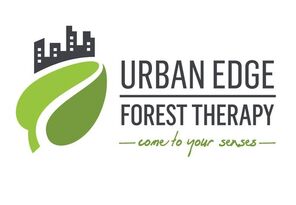
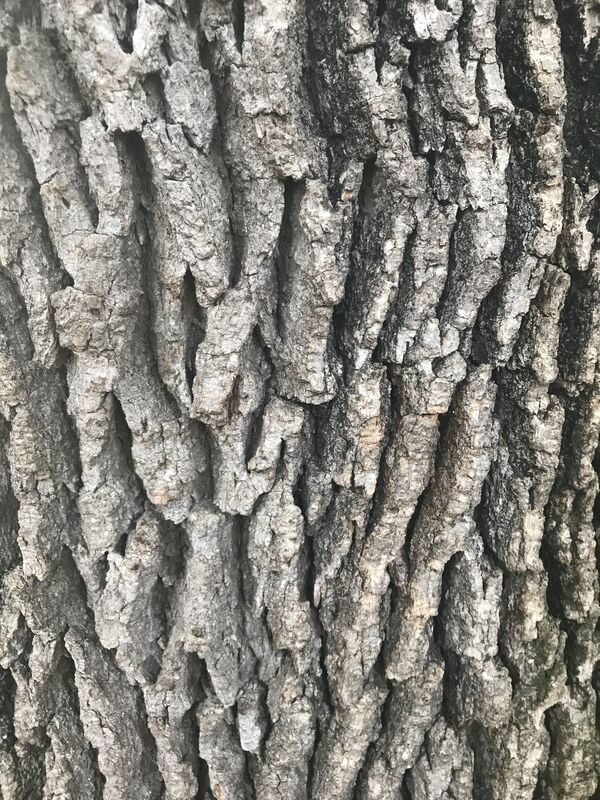
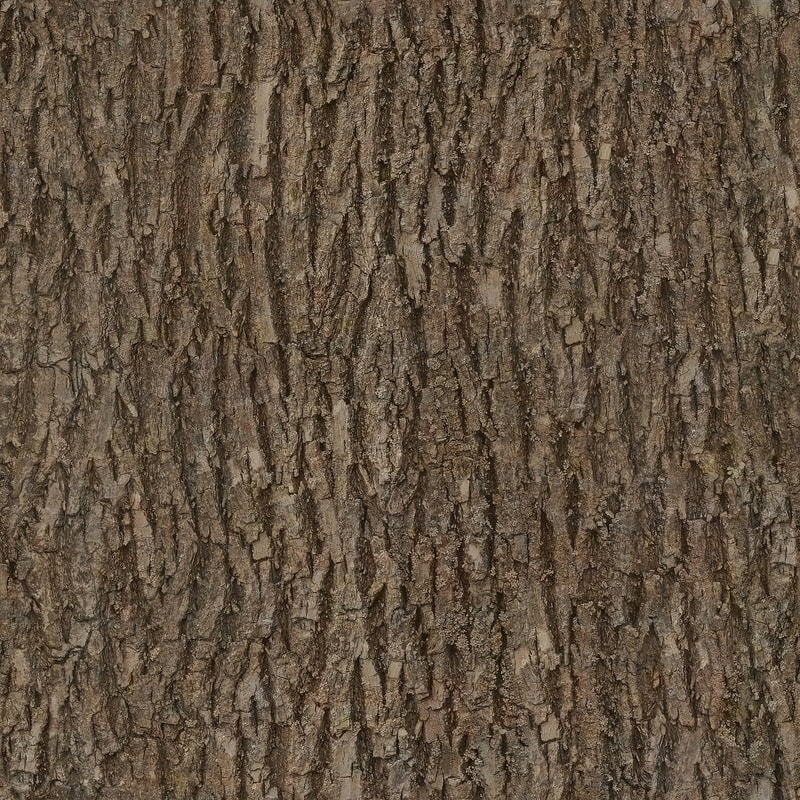
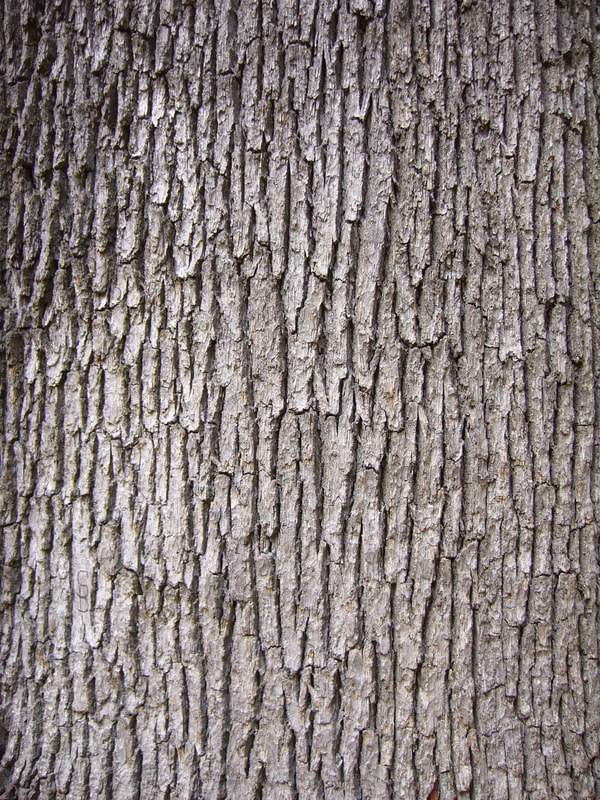
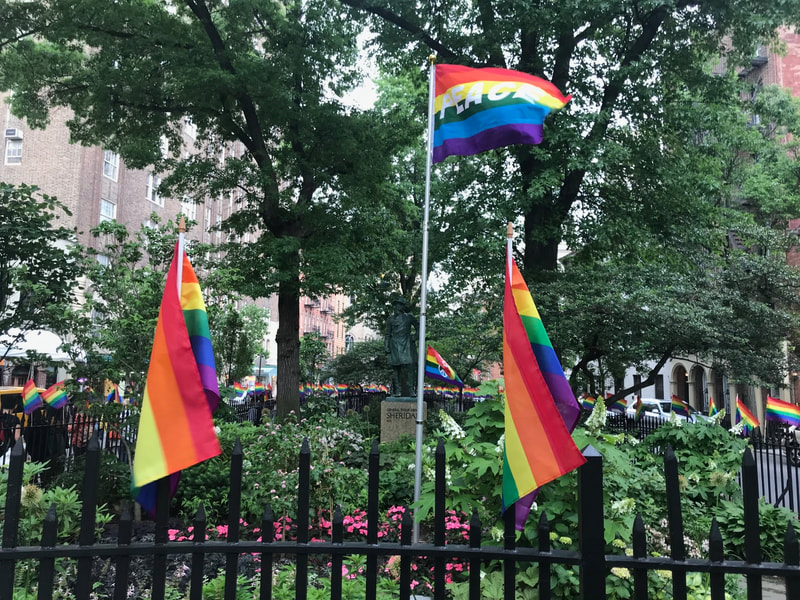
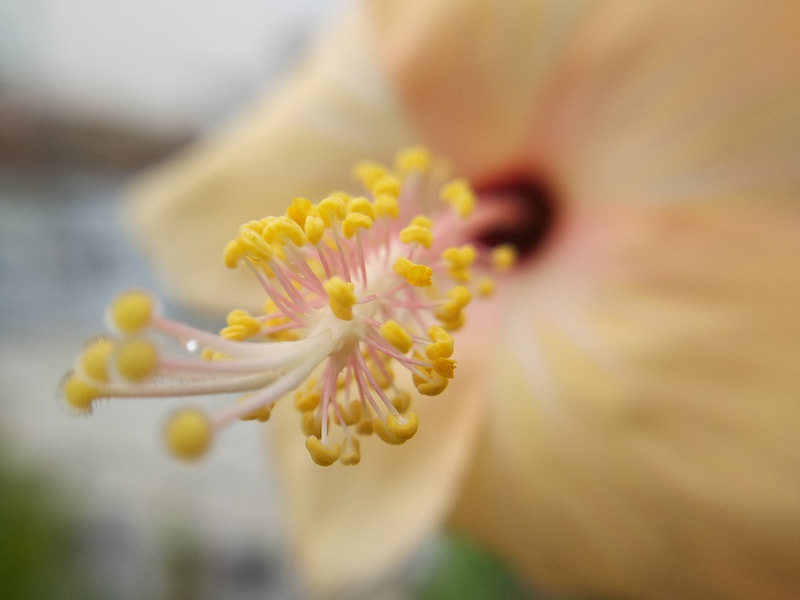
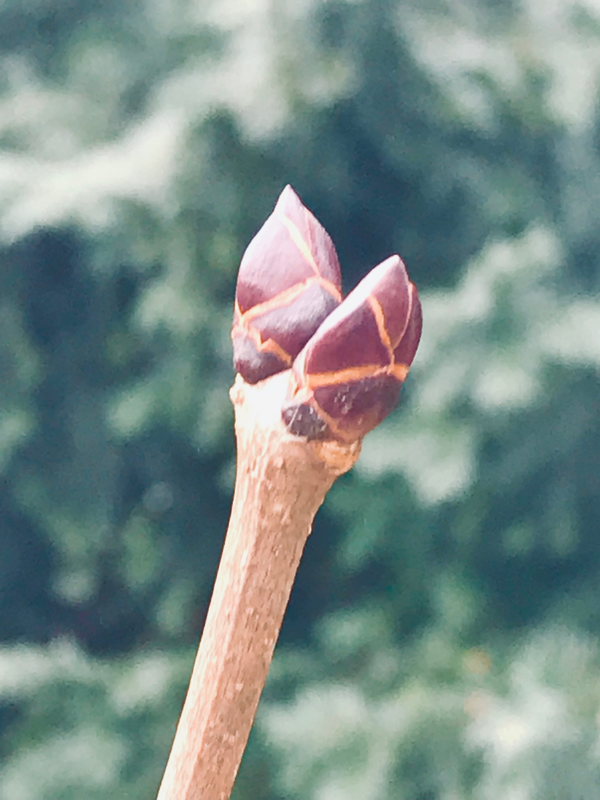
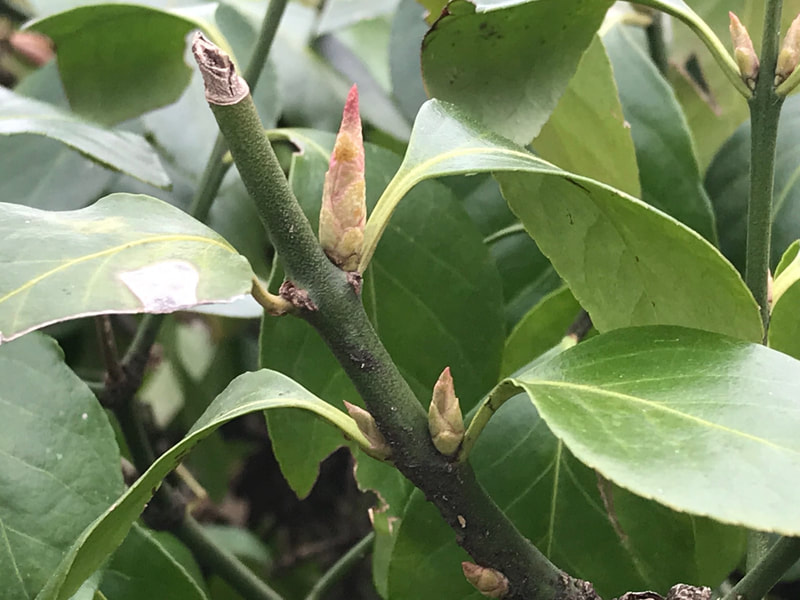
 RSS Feed
RSS Feed